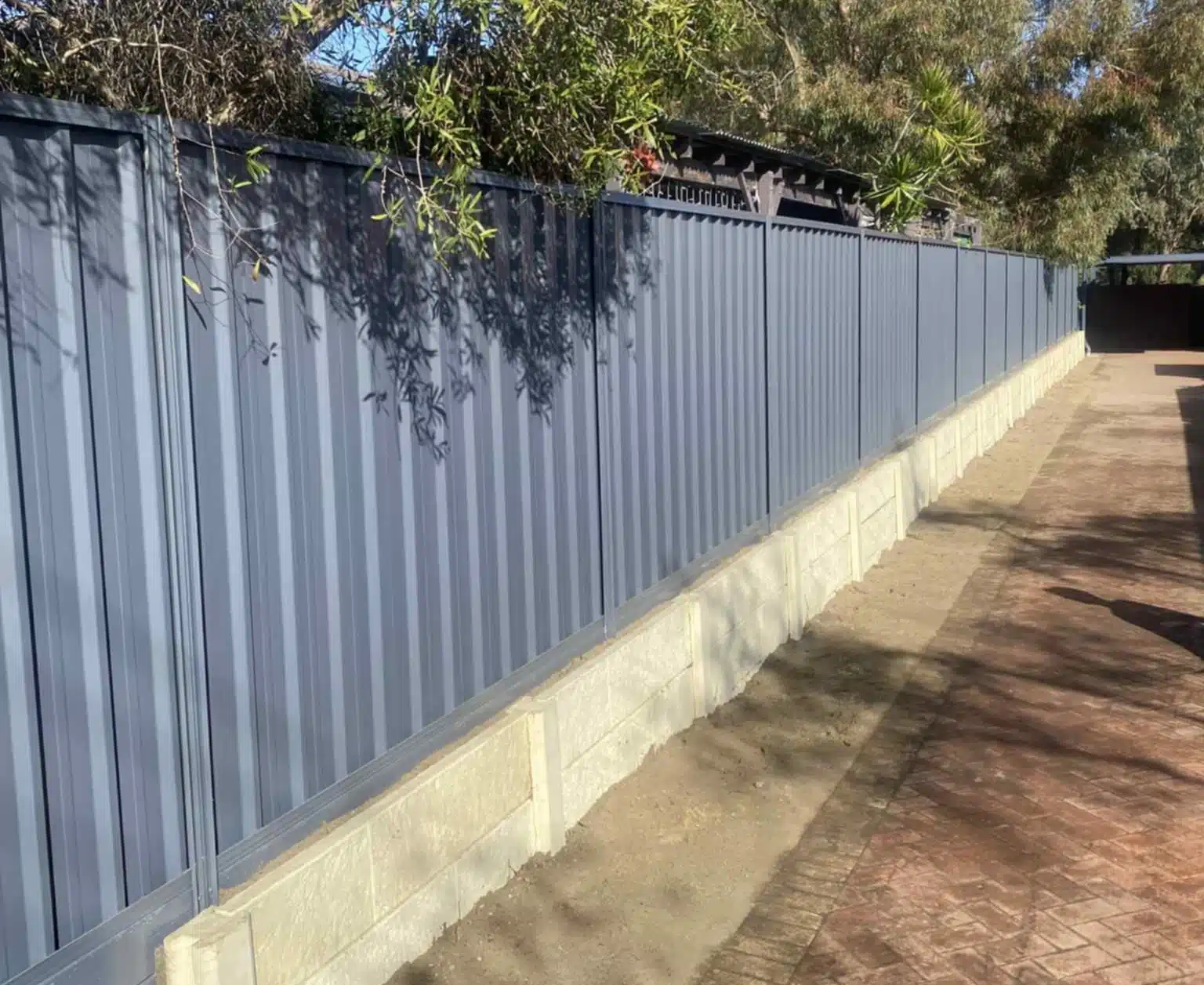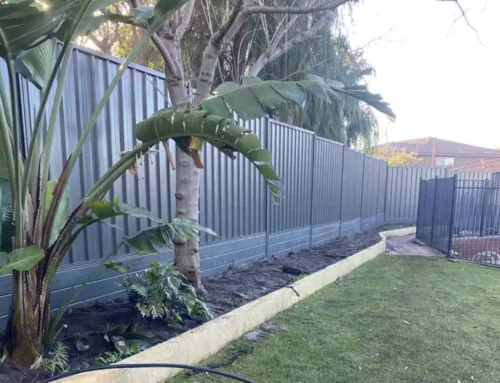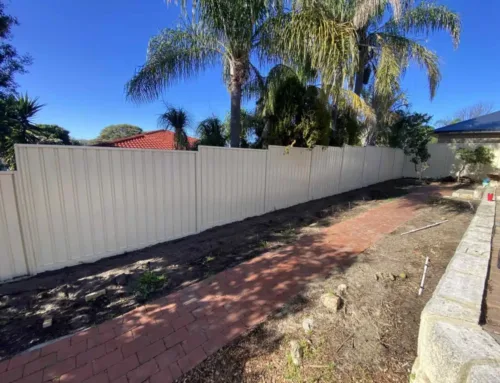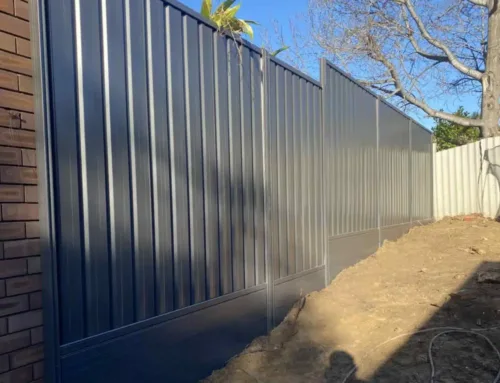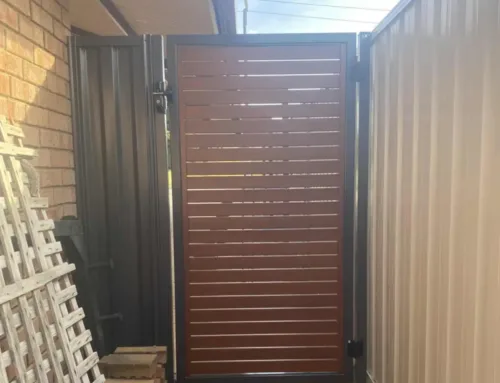admin
A fence is an outdoor system that needs proper maintenance just like a roof or driveway. With regular inspections, light cleaning and prompt repairs, you can extend service life, provide protection and tect the fence’s structural integrity and keep the finish looking sharp. Use the checklist below to maintain timber fences, Colorbond and aluminium systems, composite and vinyl panels, and chain link runs in Perth’s climate.
What routine maintenance does a fence need each year?
Walk the full boundary at least twice a year, ideally in spring and after major storms. Regular inspections help you spot signs of damage before they spread; for more tips, refer to the checklist .
- Inspect posts, rails, panels and fasteners. Look for lean, cracked caps, loose screws and any movement at the base of fence posts.
- Lubricate hinges and latches with a light outdoor lubricant. Confirm gates latch without lifting or slamming.
- Tighten fixings and replace missing caps to keep water out.
- Touch up protective coating on small chips and unsealed edges.
- Clear soil, mulch and leaf litter that trap moisture against the fence surface. Good housekeeping improves airflow and drainage.
- If a post has shifted or a panel is bent, book Fencing Repairs so further deterioration does not set in.
How long do different fence materials last?
With proper care, typical ranges are:
- Timber 10 to 20 years
- Colorbond steel 20 to 30 years
- Aluminium and composite 20 to 30 years
- Chain link 15 to 25 years
Actual life depends on fence construction quality, climate exposure and ongoing maintenance. Heavier posts, deeper footings and quality coatings extend service life. If you are planning a new fence or an upgrade, compare systems under Services for valuable maintenance tips. so the specification suits your site.
What causes fences to fail early?
Moisture and undersized structure are the usual culprits.
- Timber posts rot where soil or mulch sits high and traps moisture.
- Metal panels rust at unsealed cuts and scratched edges.
- UV rays cause low grade plastics to fade and become brittle.
- Wind damage occurs when post centres are too wide, footings are shallow or fixings are light.
- Poor drainage around downslope posts lets water pool and wreak havoc on bases.
Most of this is preventable with adequate drainage, correct spans and regular maintenance.
How often should I clean my fence?
Regular cleaning protects coatings, enhances visual appeal, and helps you spot small issues.
- Colorbond and aluminium. Wash every three to six months, more often near the coast. A garden hose, mild detergent and a soft brush remove dirt and salts without harming the finish. See styles here: Colorbond Fencing.
- Timber. Clean annually before you re seal or re stain. Allow to dry fully before coating.
- Chain link. Hose dust and cobwebs, then brush rails and tension wires to check for rust.
Avoid harsh chemicals, abrasive pads and chlorine around coated metals. A gentle approach is the most effective method for a smooth surface.
Do I need to seal, stain or paint a wood fence, and how often?
Yes. Timber needs a breathable, UV resistant coating to reduce moisture retention and sun damage.
- Re seal or stain every two to three years, sooner in high UV or wet zones.
- Coat all faces and end grain. Pay attention to rail ends, paling tops and any cuts.
- Replace cracked caps and fix irrigation leaks that wet timber daily.
- Choose products rated for exterior use and ensure compatibility with previous coats.
If you enjoy the natural look of wood but want lower upkeep, compare profiles and treatments under Timber Fencing.
What is the best way to prevent rot at the base of wood posts?
Start with the right materials and details.
- Specify H4 or H5 treated posts for in ground contact.
- Set post tops above finished grade so timber is not in direct contact with pooling water.
- Backfill with free draining material, then slope finished soil away from the post.
- Where design allows, use galvanised stirrups or post shoes to keep timber off the ground.
For species and post options, see Timber Fencing Types And Options.
How do climate and weather affect fence lifespan?
Environmental factors drive maintenance intervals.
- Coastal salt accelerates corrosion. Choose aluminium or Colorbond with marine grade fasteners and rinse salt more often.
- High rainfall increases rot risk. Improve drainage, open up vegetation and keep mulch away from rails and posts.
- Prolonged sun exposure dries timber and plastics. Maintain coatings and caps and check for hairline splits.
Aluminium slat systems offer minimal maintenance in exposed areas. Compare styles under Aluminium Slat Fencing.
What chemicals or cleaners are safe for each material?
Use gentle products and tools.
- Colorbond and aluminium. Mild detergent, soft brush, fresh water rinse.
- Timber. Oxygen bleach or specialised wood cleaners before re sealing.
- Avoid brick acid, pool chlorine and solvent heavy cleaners that can strip coatings or stain metals.
Always test a small area first and rinse thoroughly.
How do I spot early signs of damage before it spreads?
Regularly check for:
- Leaning posts, loose rails and rattling panels
- Bubbling paint, orange tea stains near screws and uncoated cut edges
- Soft timber at ground level
- Gate sag, latch misalignment and noisy hinges after wind
Repair damage promptly. Replacing a few posts or panels today prevents further damage and bigger bills later. If you find brittle legacy cement sheets at the boundary, arrange safe removal through Asbestos Fence Removal.
Should I trim landscaping away from the fence?
Yes. Plants are a common source of moisture buildup.
- Keep 150 to 300 mm clearance for airflow and access.
- Trim vegetation, especially vines, that trap moisture or add load to panels.
- Do not pile mulch or soil against the fence surface or rails.
- If you like climbing plants, put them on a freestanding trellis clear of the fence.
Does a fence need different care on sloped yards or near sprinklers?
Slopes and irrigation change how water moves.
- Step soil and hardscape so water does not pool at downslope posts.
- Redirect sprinkler heads to avoid daily wetting of timber and fasteners.
- Inspect stepped or raked sections more often for movement.
- Where level changes are significant, pair fencing with small retaining so loads do not bear on posts. Planning help is here: Retaining Wall Recommendations And Material Options.
Can pressure washing damage a fence?
Yes if pressure is high or the nozzle is too close.
- Use a fan tip, modest pressure and keep the nozzle moving.
- Test a small area first.
- On timber, re seal after deep cleaning. On painted metals, avoid needle jets that cut the coating.
Are composite and vinyl fences truly low maintenance?
They resist rot and do not need painting, which contributes to their aesthetic appeal but still benefit from regular cleaning and basic hardware care.
- Wash periodically with mild detergent and a soft brush.
- Follow span and framing guidelines so panels stay rigid in wind and heat.
- Keep bases clear of soil and lubricate hinges and latches like any fence.
- For cohesive colours across materials, see Colorbond Fencing Colours.
What are common mistakes that shorten a fence’s life?
- Burying rails or panels in soil where moisture can trap
- Letting sprinklers hit panels every day
- Skipping timber re sealing or painting cycles
- Ignoring unsealed cut edges and early rust spots
- Allowing heavy plants to grow directly on the fence
A simple seasonal plan
Autumn
Clean Colorbond and aluminium with a garden hose and mild detergent. Tighten hardware, oil hinges and trim vegetation. Pull mulch back from posts to improve drainage.
Winter
Inspect after storms for lean and movement. Clear leaf build up from bases and check proper drainage at the downslope side. Replace missing caps and touch up chips.
Spring
Clean timber with an oxygen bleach solution, let it dry, then re stain or re seal. Check ground contact points for rot and adjust gates for a smooth close.
Summer
Light wash to remove dust and pollen. Check fixings on sun exposed faces where expansion can loosen screws. Lubricate latches if they squeak or bind.
When to seek professional assistance
Call in help when a post is loose, a footing has cracked, a panel is buckled, or a gate will not hold alignment after adjustments. A technician can confirm whether heavier posts, deeper footings or upgraded fasteners would suit your site and can repair damage before it spreads. Keep dated photos and receipts so you have a record of maintenance for future buyers or insurance claims.
Conclusion
Fence longevity comes from three habits. First, keep water and soil off vulnerable edges so timber does not rot and metals do not sit wet. Second, clean lightly and often, then repair damage promptly by tightening fasteners, sealing nicks and adjusting gates before issues become structural. Third, match details to your conditions, using treated timber, concrete or metal posts where needed, deeper footings in soft ground and marine grade fasteners near the coast. With regular maintenance and a few preventive measures, your wooden fence, steel or aluminium system, composite panels or chain link line will stay straight, close smoothly and look good for years.


